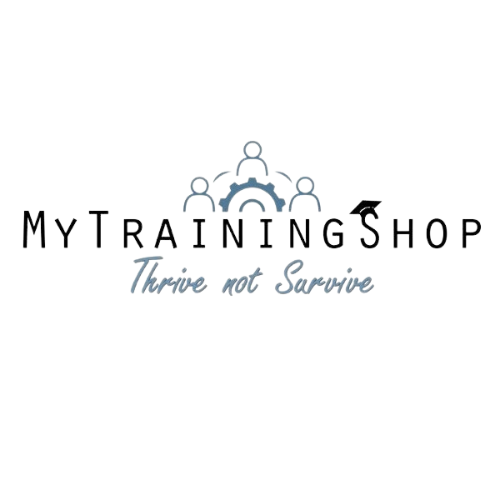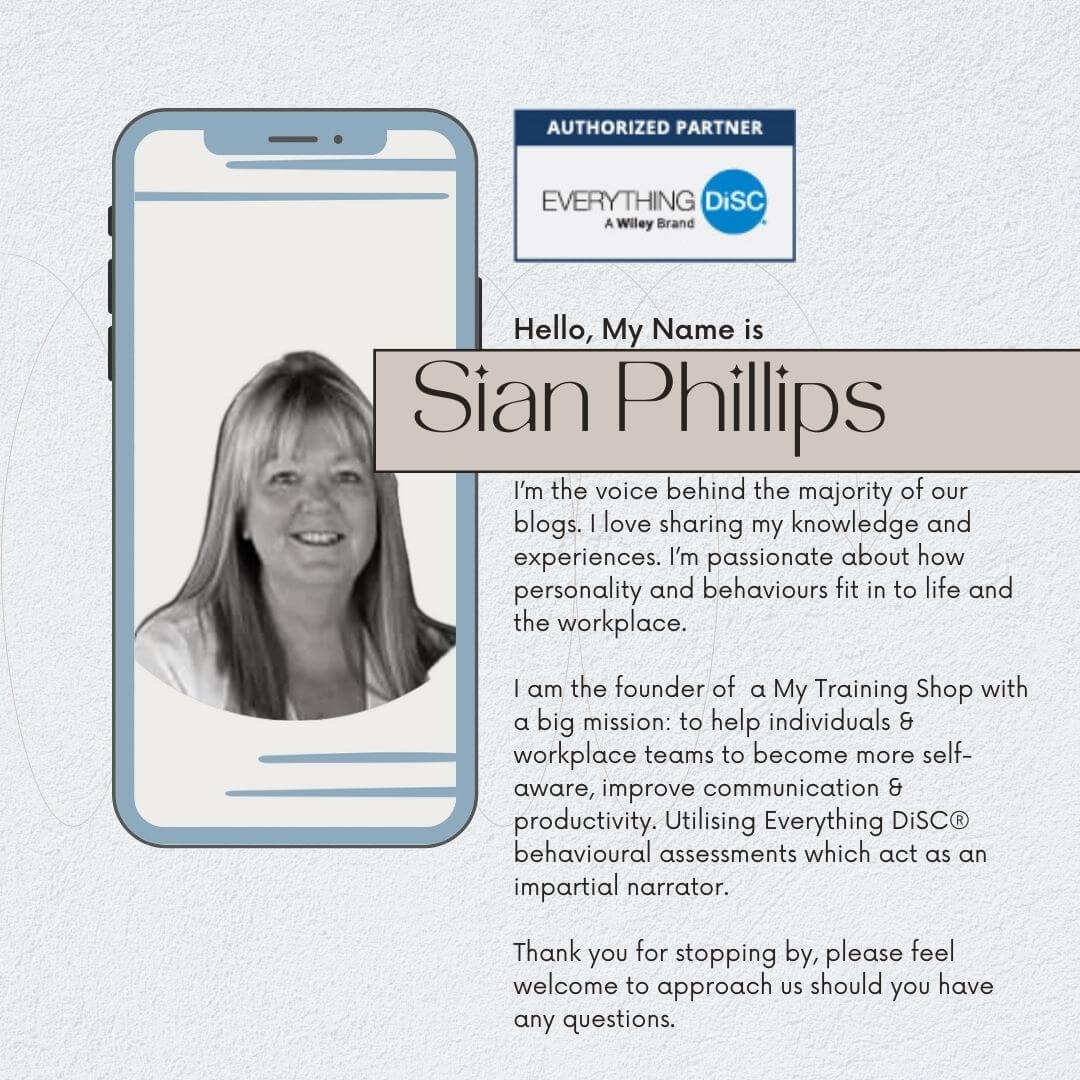DiSC Evaluations Explained for Leaders
I've spent the past two decades helping leaders understand themselves and their teams through DiSC assessments. As a Jon Wily's Everything DiSC® practitioner and authorised partner at My Training Shop, I've witnessed remarkable transformations when leaders gain insight into their behavioural patterns and learn to adapt their approach.

In this guide, I'll share what I've learned about DiSC evaluations - what they measure, how they work, and most importantly, how you can use the insights to become a more effective leader. I'll reference actual assessment results throughout (keeping identities confidential, of course) to show you what these evaluations reveal and how they can transform your leadership and training practice.
Key Takeaways
- DiSC profiles, specifically Everything DiSC® reveal behavioural preferences that directly impact your leadership effectiveness
- Each DiSC style brings unique strengths and potential blind spots to leadership roles
- Understanding your Work of Leaders report helps you improve in creating vision, building alignment, and championing execution
- Practical applications of DiSC insights can transform team communication and performance
- Leadership development should target specific behavioural areas identified in your assessment

What is a DiSC Evaluation?
DiSC is a behavioural assessment tool based on the work of psychologist William Marston. It measures how people respond to their environment along two primary dimensions:
- Fast-paced vs. Moderate-paced: How quickly you tend to act and speak
- Questioning vs. Accepting: Whether you tend to challenge or accept what others say
These dimensions create four primary behavioural styles:
- D (Dominance): Fast-paced and questioning
- i (Influence): Fast-paced and accepting
- S (Steadiness): Moderate-paced and accepting
- C (Conscientiousness): Moderate-paced and questioning

The DiSC assessment consists of a series of questions about your behaviours and preferences. There are no right or wrong answers - just your natural tendencies. The assessment then generates a comprehensive report showing your DiSC style, behavioural tendencies, and how these influence your leadership approach. Priorities sit on the outside of the circumflex, will usually have 3, occasionally 4 or 5, assigned. As you can see by the image, priorities differ for the Work of Leaders Report compared to the Workplace Report.
A typical DiSC Leadership report includes several key components:
- Your DiSC style and dot placement
- Your priorities and shading that expand the basic style
- Detailed explanation of your leadership tendencies
- Analysis of your approach to the three stages of leadership
- Your strengths and challenges
- Specific action steps for improvements

Breaking Down Each DiSC Style
Let's examine each style in detail, using insights from actual DiSC assessments I've worked with.
D Style: Dominance
Leaders with the D style are direct, forceful, and results-oriented. They tend to speak directly, make quick decisions, and focus on the bottom line.

In a recent leadership assessment I reviewed for a client (we'll call him Denard), his report noted:
"You strongly believe in your abilities, so once you've chosen a direction, you likely bury any pesky doubts that surface... your most valuable contributions as a leader may be your tendency to move forward quickly, speak with conviction, make tough decisions, and step up to the plate when the group lacks direction."
"When I've worked with D-style leaders, I've noticed they can transform their effectiveness by pausing for just five seconds before responding. That brief moment allows them to consider perspectives they might otherwise miss." – Sian Phillips, Founder
Leadership Strengths of D Style Leaders:
- Making decisions quickly and confidently
- Speaking out with bold ideas
- Initiating action and maintaining momentum
- Challenging the status quo
Leadership Challenges for D Style Leaders:
- May come across as intimidating or demanding
- Might not take time to listen fully to others' perspectives
- Could push forward without thorough analysis
- Might offer less praise than team members need
In Denard's assessment, it specifically highlighted his challenges with being receptive to others' ideas, exchanging perspectives rather than just presenting information, and offering sufficient praise to team members.
i Style: Influence

Leaders with the i style are enthusiastic, collaborative, and focused on relationships. They inspire others through positivity and passion.
Leadership Strengths of i Style Leaders:
- Building relationships and creating networks
- Generating enthusiasm for the vision
- Speaking out with new ideas
- Creating energetic, positive environments
Leadership Challenges for i Style Leaders:
- May struggle with follow-through and details
- Could prioritise positivity over addressing problems
- Might make decisions based on gut feeling rather than analysing
- May speak without fully thinking through ideas
S Style: Steadiness
Leaders with the S style are supportive, reliable, and focused on cooperation. They create stable environments and are excellent listeners.

In Sharon's assessment (similarly to my own!), I observed:
"You're patient and helpful, and you encourage the group to work together harmoniously. You make sure things run smoothly, but you generally assume people will pull their own weight and work at a responsible pace... you are a highly supportive leader who shows genuine concern for the people around you."
Leadership Strengths of S Style Leaders:
- Creating stable, predictable environments
- Listening to diverse perspectives
- Building consensus and support
- Supporting team members through challenges
Leadership Challenges for S Style Leaders:
- May avoid addressing problems directly
- Could resist change or innovative approaches
- Might not express enthusiasm visibly enough
- May appear too low-key when driving execution
Sharon's assessment specifically highlighted challenges with being more expressive when inspiring others, addressing problems more directly instead of maintaining harmony, and focusing more on the big picture when exploring ideas.
C Style: Conscientiousness
Leaders with the C style are analytical, careful, and focused on quality. They usually make decisions based on logic and detailed analysis.

Leadership Strengths of C Style Leaders:
- Analysing complex problems thoroughly
- Creating well-structured plans and processes
- Maintaining high-quality standards
- Thinking objectively and logically
Leadership Challenges for C Style Leaders:
- May overanalyse and delay decisions
- Could be perceived as overly critical
- Might focus on flaws rather than possibilities
- May appear reserved when enthusiasm is needed

The Work of Leaders Framework
One of the most valuable aspects of DiSC leadership assessments is the Work of Leaders framework, which analyses how your DiSC style influences three critical areas of leadership:
- Creating Vision: Crafting a future direction for your organisation or team
- Building Alignment: Gaining buy-in from your organisation and team
- Championing Execution: Turning vision into reality
Let's examine how different DiSC styles approach each of these areas, using insights from actual leadership assessments.
Creating Vision
Creating a vision involves three drivers:
- Exploration: Remaining open to possibilities and prioritising the big picture
- Boldness: Being adventurous and speaking out
- Testing Assumptions: Seeking counsel and exploring implications
In Denard's D style assessment, it noted:
"You have a tendency to jump right into a project, and you may not always take the time to explore the implications by carefully examining your ideas... you tend to process your decisions independently, and this makes it easy to rely too heavily on your own assumptions."
This highlights how D style leaders often need to balance their natural tendency to decide quickly with more thorough exploration and testing of assumptions.
In contrast, Sharon's style assessment revealed:
"You may need to push yourself to think more openly and creatively... You have a tendency to be practical and to focus on the details—'what is' versus 'what might be.'... when creating a vision, you may need to spend more time on the big picture."
This shows how S style leaders often need to push themselves to think more broadly and be more adventurous with their vision.

Building Alignment
Building alignment involves:
- Clarity: Explaining rationale and structuring messages
- Dialogue: Exchanging perspectives and being receptive
- Inspiration: Being expressive and encouraging
For D style leaders like Denard, the assessment pointed out:
"When conversing, you often tend to be more directive when communicating... you probably don't focus on soliciting others' opinions and input... When it comes to gaining alignment around a vision, a participatory approach is often more effective."

Meanwhile, S style leaders like Sharon (like myself) face different challenges:
"Creating a sense of momentum is probably second nature to you... you tend to consider your words carefully... your reserve may make it difficult for people to see when you're genuinely excited. When it's time to gain alignment around a vision, you may need to take a risk and show more outward enthusiasm."
These contrasting examples show how different DiSC styles must adapt their natural tendencies when building alignment.
Championing Execution
Execution involves:
- Momentum: Being driven and initiating action
- Structure: Providing a plan and analysing in-depth
- Feedback: Addressing problems and offering praise
For D style leaders, the assessment often reveals:
"You have a tendency to improvise and figure things out along the way... Even if a lack of planning doesn't bother you, many people get very anxious when they don't have a well-defined structure to depend on."
For S style leaders like Sharon:

"You have a patient, low-key approach to leadership... When leaders are driven, people start finding new ways to make rapid progress and produce better results... You have a strong distaste for tension, which can be a benefit when tact is needed. However, when a confrontation is called for, you may avoid stirring things up."
These insights help leaders understand how their natural style affects their execution approach and where they might need to adapt.

Practical Applications of DiSC in Leadership
Understanding your DiSC profile provides practical value in numerous leadership situations. Here's how to apply these insights:
Building Balanced Teams
DiSC evaluations reveal how to create complementary teams. For instance, one financial services team that one of my clients has been working with consciously paired:
- D style leaders to drive decision-making and momentum
- i style members to maintain enthusiasm and relationships
- S style staff to promote harmony and provide support
- C style analysts to ensure quality and thoroughness
This balance led to more comprehensive approaches to problems, with each style contributing their strengths.
Adapting Communication Style
Effective leaders adjust their communication based on team members' DiSC styles:
For D style team members:
- Be direct and concise
- Focus on results and outcomes
- Present options with pros and cons
- Don't waste time on excessive details
For i style team members:
- Allow time for social connection
- Express enthusiasm
- Focus on the big picture and possibilities
- Give them opportunities to express opinions
For S style team members:
- Provide reassurance and support
- Be patient and give them time to process
- Present information in a logical sequence
- Acknowledge their contributions
For C style team members:
- Provide detailed information and evidence
- Be prepared for questions and analysis
- Focus on accuracy and quality
- Give them time to think things through
Navigating Leadership Challenges
DiSC assessments often include specific suggestions for development. For example:

From a D style assessment: "Even if your first instinct is to dismiss an opinion, encourage a discussion so you can understand what's behind it. Not only will this help people feel that they are being heard, it might give you fresh insights as well."
From an S style assessment: "Address problems in a timely manner. If you avoid the issue, the situation might get worse and cause frustration and conflict on your team... Be consistent with your feedback. If people aren't performing to the set standard, it's important to let them know."
These targeted suggestions help leaders develop specific behaviours that don't come naturally but are necessary for balanced leadership.

Ready to Discover Your DiSC Leadership Profile?
DiSC evaluations provide concrete, practical insights that can transform your leadership effectiveness. By understanding your natural tendencies and learning to adapt when needed, you can lead with greater confidence and impact. Start by activating your Work of Leaders Assessment.
At My Training Shop, we've supported many trainers, consultants and organisations who work with leaders across the UK to apply DiSC insights to overcome challenges and build stronger teams.

We allocate 30-minute time slots free of charge to discuss how DiSC might benefit your learning and development practice or organisation as a whole. Book today to get started.
The way we work is changing, and so is the way we develop managers. As skills take centre stage in the future of business, organisations need leaders who can adapt, empower, and drive performance, right in the flow of work.
That’s why we’re excited about Jon Wiley’s latest breakthrough: WORKSMART on Catalyst a cutting-edge solution designed to help managers master critical leadership skills with high-impact, real-world application.
Trainers, Consultants, Coaches, Recruiters, HR see our dedicated page.
Frequently Asked Questions
How accurate are DiSC assessments?
DiSC assessments have been validated through extensive research and by millions of users. In my experience, most clients find their reports remarkably accurate. However, DiSC measures preferences and tendencies, not abilities. People can and do act outside their natural style when situations demand it.
Can people change their DiSC style?
Your core DiSC style tends to remain relatively stable throughout adulthood. However, the goal isn't to change your style but to become more versatile in adapting your behaviour when needed. With awareness and practice, anyone can develop behaviours associated with other styles.
How often should teams retake DiSC assessments?
Most teams benefit from revisiting their DiSC profiles every 18-24 months or when there are significant team changes. While results typically remain stable, people's understanding and application of the insights deepen over time.
How do I implement Everything DiSC® Work of Leaders in my organisation?
I recommend starting with leadership teams, then expanding to departments with Everything DiSC® Workplace. Each participant should receive their personal assessment and participate in a facilitated discussion about applications. Follow-up coaching helps leaders apply the insights effectively.
OR
Consider Jon Wiley’s latest breakthrough: WORKSMART on Catalyst a cutting-edge solution designed to build on the DiSC model to help managers master critical management skills in the moment.
What can I expect from my DiSC assessment report?
A comprehensive DiSC leadership report typically includes:
- Your DiSC style and dot placement on the Everything DiSC® map
- Your personalised priorities and shading
- Detailed description of your leadership tendencies
- Analysis of your approach to vision, alignment, and execution
- Your key strengths and challenges
- Specific action steps for continued development
© Sian











